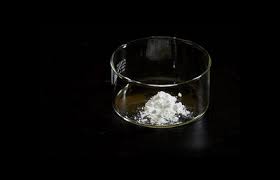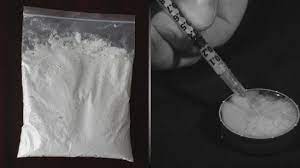Uncategorized
The Legal Status and Risks of U-47700: What You Need to Know
In recent years, synthetic opioids like U-47700, commonly known on the street as “Pinky,” have gained notoriety for their potency and dangerous effects. This potent drug has made headlines due to its high risk of overdose and its legal status, which varies significantly across different regions. In this comprehensive blog post, we will explore what U-47700 is used for, its legal status, the implications of its availability, and why it is a matter of concern for public health and safety.
What is U-47700?
U-47700 is a synthetic opioid that was developed in the 1970s by the pharmaceutical company Upjohn. It was initially intended as a powerful analgesic to manage severe pain, similar to other opioids such as morphine and oxycodone. Despite its potential medical uses, U-47700 was never approved for human use due to concerns about its safety and efficacy.

Chemical Composition and Potency
U-47700’s chemical formula is 3,4-dichloro-N-[2-(dimethylamino)cyclohexyl]-N-methylbenzamide. It belongs to a class of drugs known as “designer opioids,” which are chemically engineered to produce effects similar to those of traditional opioids but with potentially more dangerous consequences. U-47700 is estimated to be approximately 7.5 times more potent than morphine, making it extremely effective at relieving pain but also increasing the risk of overdose.
Medical Use and Intended Purposes
Although U-47700 was developed for pain management, it was never marketed or approved for medical use. The potential for addiction, abuse, and severe side effects outweighed its benefits. However, understanding its intended purposes can provide insight into why it was initially developed and why it might be attractive to illicit drug users.
Research and Laboratory Use
In the context of research and laboratory settings, U-47700 was studied for its potential as a pain reliever. Researchers were interested in its ability to bind to opioid receptors and its efficacy compared to other opioids. However, due to its high potency and the risks associated with its use, further research into its medical applications was halted.
The Legal Status of U-47700
The legal status of U-47700 varies widely across different jurisdictions. Understanding its legal classification is crucial for addressing its availability and controlling its misuse.
Legal Classification in the United States
In the United States, U-47700 is classified as a Schedule I controlled substance. This classification means that it is considered to have a high potential for abuse, no accepted medical use, and a lack of accepted safety for use under medical supervision. Schedule I substances are illegal to manufacture, distribute, or possess, and their use is strictly regulated.

The U.S. Drug Enforcement Administration (DEA) placed U-47700 in Schedule I in 2016 due to its growing popularity in the illicit drug market and the associated health risks. This legal status aims to curb its availability and reduce the potential for abuse and overdose.
International Legal Status
Internationally, the legal status of U-47700 also varies. Many countries have taken steps to classify U-47700 as a controlled substance due to its high risk of abuse and potential for harm. For example, the United Kingdom and Canada have both enacted legislation to ban the production, sale, and possession of U-47700.
In some countries, however, U-47700 may not yet be explicitly listed as a controlled substance. This regulatory gap can lead to its continued availability through illicit channels, including online markets and black markets.
U-47700 for Sale: The Illicit Market
Despite its legal status, U-47700 is still available on the black market. The drug’s high potency and effects make it appealing to users seeking a powerful opioid high, but its sale and distribution pose significant risks to public health.
Online Marketplaces
The dark web has become a major conduit for the sale of synthetic opioids like U-47700. Online marketplaces often list U-47700 under various names, including “Pinky” or “U4,” and offer it for sale with relative anonymity. These platforms exploit regulatory gaps and lack of oversight, making it challenging for law enforcement to track and shut down illicit sales.
Street Availability
On the streets, U-47700 is sometimes sold as a powder or in pill form. It may be adulterated or mixed with other substances, increasing the risk of overdose. Street names such as “Pinky” or “Pink Heroin” can mislead users, as these names may suggest that the drug is similar to heroin or other opioids, when in reality, it is much more potent and dangerous.
The Risks and Dangers of U-47700
The use of U-47700 carries significant risks, particularly due to its high potency and the potential for overdose. Understanding these risks is essential for recognizing the dangers associated with this drug.
Overdose Risk
One of the most pressing concerns with U-47700 is the risk of overdose. Due to its high potency, even a small amount of U-47700 can lead to severe respiratory depression, which is a common cause of death in opioid overdoses. Symptoms of an overdose include:
- Severe Respiratory Depression: Slowed or stopped breathing.
- Unconsciousness: Loss of consciousness or inability to wake up.
- Pinpoint Pupils: Extremely small pupils.
- Cyanosis: Blue-tinged lips and fingertips due to lack of oxygen.
Addiction and Dependence
Like other opioids, U-47700 has a high potential for addiction and dependence. Users may develop a tolerance to the drug, requiring higher doses to achieve the same effects. This can lead to a cycle of increased use and dependence, making it difficult for individuals to stop using the drug without professional help.

Physical and Mental Health Effects
Long-term use of U-47700 can have severe physical and mental health consequences, including:
- Organ Damage: Prolonged use can damage the liver, kidneys, and other organs.
- Mental Health Issues: Chronic use can lead to anxiety, depression, and other mental health disorders.
- Gastrointestinal Problems: Nausea, vomiting, and constipation are common side effects of opioid use.
Addressing the U-47700 Crisis
Efforts to address the issues associated with U-47700 require a multi-faceted approach, including regulation, public health initiatives, and education.
Law Enforcement and Regulation
Strengthening regulations and enforcement efforts is crucial for controlling the distribution of U-47700. This includes international cooperation to monitor and shut down online marketplaces that sell synthetic opioids. Law enforcement agencies must also work to intercept illegal shipments and prosecute those involved in the trafficking of U-47700.
Public Health Initiatives
Public health initiatives play a key role in addressing the crisis. These initiatives include:
- Education and Awareness: Informing the public about the dangers of U-47700 and other synthetic opioids.
- Harm Reduction: Implementing harm reduction strategies such as providing access to naloxone, a medication that can reverse opioid overdoses.
- Addiction Treatment: Offering support services for individuals struggling with addiction, including counseling, rehabilitation programs, and medical treatment.
Conclusion: The Urgent Need for Action
U-47700, or “Pinky,” represents a significant public health challenge due to its potency, legal status, and the risks associated with its use. While it was initially developed as a pain reliever, its high potential for abuse and overdose has led to its prohibition in many regions. Despite these legal restrictions, U-47700 remains available on the black market, posing a serious threat to individuals and communities.
Addressing the U-47700 crisis requires a comprehensive approach, involving law enforcement, public health initiatives, and education. By understanding the legal status, risks, and implications of U-47700, we can work towards mitigating its impact and promoting a safer, healthier future for all.
In conclusion, the fight against U-47700 and other synthetic opioids is ongoing. Through informed public awareness, effective regulation, and accessible support services, we can make strides in combating this dangerous drug and protecting public health.
